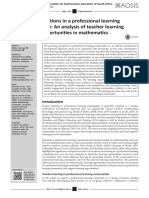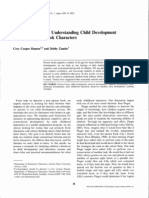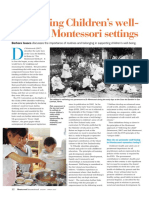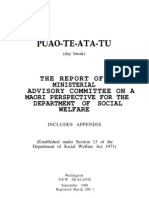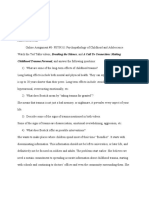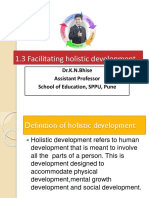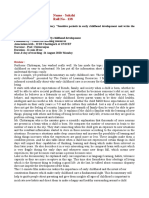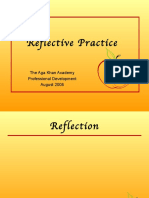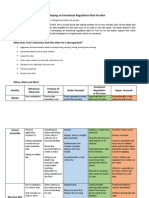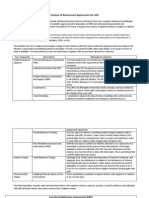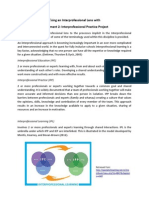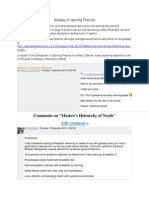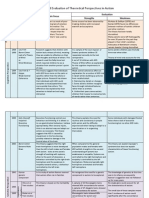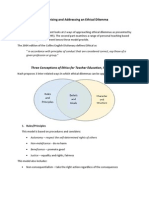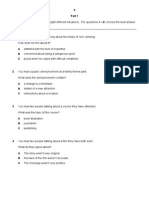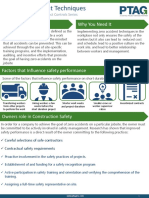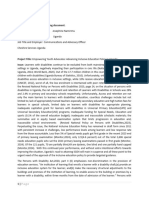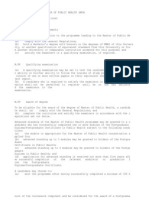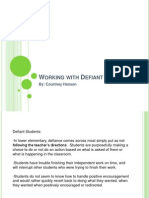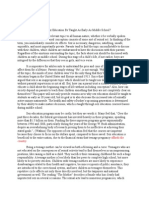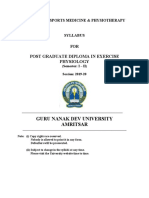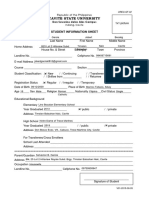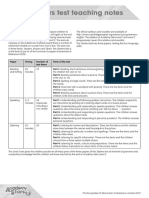Reflective Thinking: What, Why and How
Hapaitia te ara tika pumau ai te rangatiratanga mo nga uri whakatipu. Foster the pathway of knowledge to strength, independence and growth for future generations.
What is Reflective Practice?
In his book, The Reflective Practitioner, How Professionals Think In Action, Schon (1983) defines reflective practice as: "the capacity to reflect on action so as to engage in a process of continuous learning", which, according to the originator of the term, is "one of the defining characteristics of professional practice" (as cited by Wikipedia). In his book, Reflective Practice, Writing and Professional Development, Bolton (2010) defines reflective practice as "paying critical attention to the practical values and theories which inform everyday actions, by examining practice reflectively and reflexively. This leads to developmental insight" (as cited by Wikipedia). Reflective practice allows those in the education, and other professions, to learn from their own experiences as well as from formal professional development opportunities. It allows us to review and analyse our teaching practices and come up with ways of improving them. There has been interest in reflective practice since Dewey put forward his theory of routine action vs. reflective action in 1910 this interest has increased in the last 30 years. A number of models have been put forward to explain the reflective practice process, some of these are briefly outlined below. Click on the images for links to further
Argytis and Schn 1978: single loop and double loop theory of reflective practice based on the identification and correction of an error.
Image retrieved from: google images
�Kolb 1975: an experiential learning cycle.
Image retrieved from: http://www.simplypsychology.org/learning-kolb.html
Schn 1980s: reflection on action (after an event has occurred) and reflection in action (during an event is occurring).
Image retrieved from: http://www.mcgraw-hill.co.uk/openup/chapters/9780335222407.pdf
Gibbs 1988: a structured debriefing.
�Image retrieved from: http://www.heacademy.ac.uk/resources/detail/new-to-teaching/STEM-resources/teaching-reflective-writing
Johns 1995: a structured model designed to be shared with mentors or colleagues based on the premise that this will speed up the process of reflection.
Image retrieved from: http://researchnurse.wordpress.com/2013/07/10/reflective-models-johns-1995-vs-gibbs-1988/
Brookfield 1998: four critical lenses: teacher themself, learners, colleagues, theories
�Image retrieved from: http://shrdocs.com/presentations/21842/index.html
Rolfe 2001: a simple model base on 3 reflective questions.
Image retrieved from: http://en.wikipedia.org/wiki/Reflective_practice
�Why should we engage in Reflective Practice? General
It models for our children the metacognitive processes we want them to use. It keeps us open to change in both content and practice. It is a source of on-going self-assessment about the pedagogy we use.
Children with ASD in a mainstream classroom
We often ask our children to show us how they felt an activity went by using thumbs up, middle or down. A good visual barometer that is always at hand. The wealth of research in the field of autism brings with it new ideas, strategies and interventions for working with children with ASD. I have happily used social stories for many years but now have added in comic strip stories to allow for that in the moment learning with a child. Both methods are based on work by Carol Gray who by seeking ways to improve on social stories is a good example of a reflective practitioner. We should always be looking for ways With children on the autistic spectrum, we can never fully understand to make our teaching more effective. how they are learning and so must continually be exploring interventions that may help them with a particular need. It is important to look for explanations We often spend a long time chatting informally as a team trying to as to why things did not go as well as work out why something has not gone as well as expected. This week a expected and to act on this child who needs help with his toileting suddenly became very knowledge distressed again after a number of weeks of growing compliance. Upon reflection, when I thought about what he was trying to say to me during this incident, it became apparent his distress was due to not wanting to stand on the floor of the toilet in bare feet as it was very cold that day. At the time I was too caught up in the process of getting him changed but how wonderful reflection is. The same response had been noted by the TA and the relief teacher. Now the use of a towel to stand on has meant we are back on track. It ensures that we are aiming to do We are not alone in experiencing challenges with our children, our best for the children, families and problems at school may very well be occurring at home as well. colleagues Reflection with the family can often be the missing piece in the puzzle offering a possible course of action for both environments. When children move onto the next years teacher I often find passing on details about strategies challenging, especially if it is something which I am doing instinctively. Reflection helps me to analyse my actions and so more effectively pass this information on. The needs and responses of our children with ASD are fluid in nature, by monitoring the effectiveness of on-going strategies we can predict and prepare for any adaptations that may be required as opposed to getting caught out by thinking everything is working well therefore there is no need to change. This years study has been an excellent example of how reflecting on my practice in light of new learning has led to exciting changes in our class environment, my own teaching practices and those of other colleagues in the school that work with special needs children.
It prevents us from getting complacent
It keeps our classroom practice alive
How do I engage in Reflective Practice?
�General
Whole school professional development on using the inquiry model
Children with ASD in a mainstream classroom
Last year I was involved with a pilot study on teaching as inquiry run by our DP as part of her Aspiring Principals Program. It gave us experience of a structured reflective practice supported by outcome data and regular review. I was able to use this to focus on special needs children in my class. Earlier this year we had a teacher only day focused on coaching conversations, led by Jan Robertson. We had to work with someone we did not normally spend time with and I paired with a new teacher who was taking over a class including a child with autism whom I had taught the previous. Strategies to deal with this child was the teachers focus for the conversation so it turned out to be very valuable for us both and for the child. The idea of teaching as inquiry trialled in last years pilot study is now being used across the school as part of our whole staff appraisal program. My inquiry question is How is my differentiated plannin g and small group programs helping to raise the level of writing for boys in the class who are currently below standard? This includes a child with ASD and a focused program for him has resulted in progress far beyond what we were hoping for. After a particularly challenging writing lesson earlier this week I talked to our TA. We discussed moving our 2 children with high learning needs to an area where they could work together with her in the class but where they would not be distracted by or distract others during writing times. This idea came from some photos the TA had taken of the 2 children working side by side. She explained how the children were supporting each other and keeping each other on task. She agreed it seemed like a good idea. We then asked the children, they were thrilled by the idea. Our barrier was how to create such an area, we should not have worried, the 4 of us spent the lunch time working out how to change the room around. By the end of the day the children were able to explain to the rest of the class what the classroom was going to look like in the morning. The standard of writing has increased across the whole class overnight and the children supported by the TA are now starting on tasks independently during this session. I have used email conversations very successfully with one family of a child on the autistic spectrum. We would share successes and challenges from school and home through regular evening emails and brainstorm ideas that we could try in both environments. Living with a partner who is also trained as a primary school teacher and has a large helping of ASD characteristics, means that many an evening is spent in reflective conversations about the special children in my class. My self-talk around working effectively with my children with ASD
Coaching conversations
My Portfolio and Inquiry Learning based appraisal process
Conversations with the children Conversations with colleagues
Conversations with families
Conversations with partner
Self-Talk
�Communities of Practice
Childrens assessment data
often starts off in the form of self-blame, especially if non-compliance and melt downs have been involved, but eventually I can come round to looking objectively at what the antecedent to the behaviour was and respond to this appropriately. The 25 minute cycle ride to and from school is a prime time for self-talk and reflection. Talking with our school SENCO and ORS teacher is a great reflective opportunity for me as is participating in the ASD forums from this study. We have recently started using a narrative assessment approach with a child with ASD and I was amazed to see how after just 2 days it was providing a window into what he could already do in the target area. We have gone from not knowing where to go with this child in maths to having a clear goal and evidence to reflect on and develop next learning steps.
References
Reflective practice. (2013, August). Retrieved from wikipedia: http://en.wikipedia.org/wiki/Reflective_practice Reflective practice and profesional development. (2004). Cyc-online. ERIC Digest. Retrieved September 2013, from http://www.cyc-net.org/cyc-online/cycol-0404-reflective.html The Reflective Teacher. (n.d.). Retrieved September 2013, from http://www.mcgraw-hill.co.uk/openup/chapters/9780335222407.pdf



